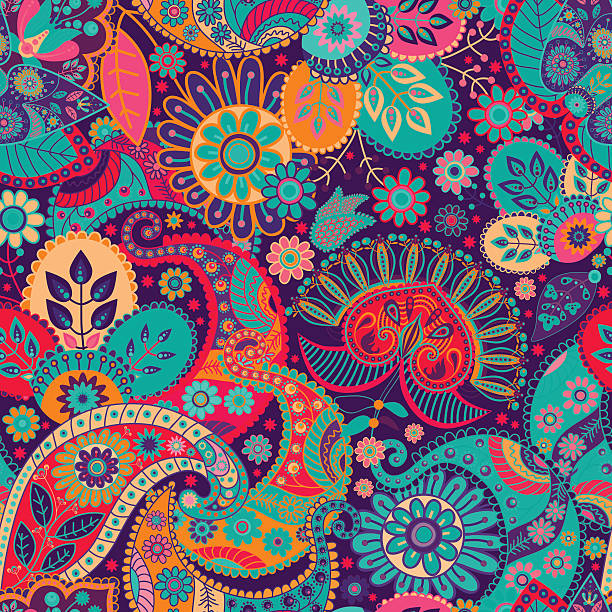
The paisley pattern - From ancient Persia to modern fashion
Introduction
The paisley pattern, also known as the Paisley pattern, has gone through the ages. What comes to your mind when you think of this pattern?
To some, it brings to mind the 19th century designs, widely used in fashionable scarves and shawls. The others obviously think of "swinging sixities", with its psychedelic color palette, and its beautiful and assertive designs. It's no surprise that cashmere is the inspiration for many blends, as it has been used in a wide variety of styles, and in many countries around the world.
The origins of the paisley pattern
In the UK, the paisley pattern is often associated with Scotland, and the city from which it takes its name of course, the town of Paisley.
This very distinctive pattern called "Boteh" was originally used on royal clothing, and even crowns. Historians believe that the teardrop pattern was meant to represent the cypress or mango tree, which were symbols of eternal life and prosperity. Over the years, the pattern's popularity grew, and by around 1500 it was a common pattern in clothing (and stonework) across Asia.
Travel to UK
In the late 1700s, the British East India Company stumbled upon Asians' "Boteh" clothing, and brought some samples back to the UK. The pattern was extremely popular, and manufacturers very quickly experimented with methods of creating similar fabrics.
Ironically, the first places where the paisley pattern was produced were Norwich and Edinburgh, not the town of Paisley. It wasn't until the 18th century that Kashmir became the epicenter of this iconic motif. The Napoleonic Wars were largely responsible for this fact. Reduced trade meant silk workers were technically unemployed, and when Edinburgh factories hired them to take orders for Boteh-inspired fabrics, it was there that they realized the full potential of produce these tissues themselves.
The rise and fall (and rise) of cashmere
Cashmere was at the forefront of fashion in the early Victorian era, with people battling to get their hands on well-woven shawls and scarves. Arrived in 1845, the modern paisley pattern became so popular that the French began to copy it, which led the British government to patent the pattern.
However, by the end of the Victorian era, interest in the material had waned, until it was virtually non-existent. It wasn’t until the 1960s that paisley experienced a sudden resurgence, and became forever associated with ‘hippy’ fashion. Celebrities such as The Beatles, The Rolling Stones and Twiggy pushed it even further into the limelight, making it the must-have fabric of the time.
However, towards the end of the Victorian era, the general craze for this motif waned, until it became virtually non-existent. It wasn't until the late 1960s that cashmere got a new start, and began to be associated with hippy fashion. Stars such as The Beatles, The Rolling Stones, and Twiggy Lawson put it even more in the spotlight, making this pattern a must-have.
Even today, cashmere continues to be used by fashion designers across the world. For example, Jonathan Saunders' show in 2012 relies heavily on the paisley pattern, as Ronit Zilkha did in her 2004 collection before her. But Stella McCartney, Jil Sand, and JW Anderson also used it extensively in their fashion show.
Ancient roots, Asian inspiration
Paisley patterns are still used throughout the fashion world, most notably in yoga pants and harem pants, and other casual-style clothing. The designs, organic, or naturally inspired, pair very well with any type of lifestyle, making it a popular choice for people who travel or seek a certain harmony in their home.
To take a look at our collection of ethnic clothing using paisley patterns, click here.